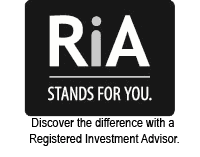Download the PDF copy here
Executive Summary
- High inflation directly affects personal and corporate cash flow, and it can be the root cause of economic and corporate earnings downturns. The high cost of living has unnerved consumers. The University of Michigan household sentiment index is at a level last seen during the Financial Crisis (2008/9). It, therefore, holds the greatest attention of the Federal Reserve. At this point, the FED is committed to tackling inflation at the expense of possibly creating a recession.
- At crosscurrents to the FED’s efforts to slow the economy via increases in interest rates and reductions to money supply, is the good financial health of consumers, a strong labor market, and strong corporate capital investment (up 20% each quarter this year) aimed at meeting demand with additional supply.
- An argument can be made that the focus of the FED to slow the economy to reduce demand is a backhanded and counterproductive way to solve a problem whose root cause is a shortage of supply. Higher interest rates normally deter corporate capital investment (but to date have not), reduce the construction of housing while we have about a 3,000,000-unit shortage, make housing even more unaffordable, and forces more people out of the workforce when labor is in short supply.
- Technology companies extrapolated extraordinary demand during the Covid shutdown into the future and wound-up overstaffing. These companies are pursuing layoffs and have reduced future hiring plans. It could be generalized that most other companies are loath to let employees go when their reality is a difficulty in having enough help. Labor supply is tight. There are 1.7 job openings for every person unemployed. This may be down from 2 job openings per unemployed person early in the year, but it still points to a need for more people to return to work.
- The employment participation rate is 62.2%. It was 66% prior to the Financial Crisis and it was 63.4% prior to the pandemic. The worker shortage is about 5 million people. It would require an improvement in employment/participation rate of about 2.5% to resolve the labor shortage issue.
- With individual financial well-being still a thing, real consumption rising all year, and corporate demand for labor strong, it is difficult to imagine a rise in unemployment. It is easier to envision a slowdown in corporate earnings or even an earnings recession.
- It looks like a heavyweight fight between a determined inflation fighting Federal Reserve and an economy being lifted by the financial well-being of its constituents.
- We estimate that market volatility will continue until a clear winner has been determined. In the meantime, we cheer for the free capitalistic system to help resolve high inflation via greater supply before the Federal Reserve delivers too many punches to the demand side of the equation.
Macro-Economic Perspective
- Consumer financial well-being is very good but trending down.
- The savings rate has declined from 8.8% in 2019 prior to the pandemic, after rising to double digit levels in 2020 and 2021, to below 4% for the last seven months.
- Median household cash reserves by annual income for all quintiles remain approximately 50% higher than prior to the pandemic. Total excess household savings is $1.7 trillion. $0.35 trillion is held by the lower half of the income distribution. Data from the St. Louis Federal Reserve.
- It is estimated that this cash surplus can last 9 to 12 months at the present spending rate.
- Despite nominal annualized pay raises of more than 5% for each quarter this year, real disposable income was down 2.1% in Q1, down 0.1% in Q2, and up 0.8% in Q3. The trend is right, but this explains the decline in the savings rate and reduction in excess savings.
- Real personal consumption expenditures, a comprehensive measure of consumer spending, were up in Q1, Q2, and Q3 at 1.24%, 0.7%, and 0.6%, respectively.
- Household net worth reached $111.04T at the year-end 2019. Since then, it had risen 28% to $150T at the end of 2021. At Q2 end, it declined to $143.8T. The 2021 year-end value looks like a near term peak, but household net worth continues to be supportive of economic growth. Source: Federal Reserve (September 2022 reading comes out in December).
- Real GDP (nominal GDP less inflation) growth has reversed course from the Q1 (down 1.6%) and Q2 (down 0.6%) doldrums. The advanced estimate of third quarter real GDP was up 2.9%. The Federal Reserve Bank of Atlanta estimates the Q4 real GDP will be up 4.2%.
- Real GDP projections: Although economists are raising the probability of a recession next year, only one of the five groups we review is projecting a recession next year. The Conference Board projects a recession in the first half of the year and a recovery in the second half. The range of other projections is 0.5% to 1.2% real GDP growth in 2023.
- Money Supply (M2): The massive increase of 42% in M2 money supply (cash, checking and savings deposits, money market, mutual funds, and CDs) from February 17, 2020, to the end of 2021 has been well documented. Historically the Federal Reserve Bank raises money supply in a range of 3% to 6% per year to maintain stable prices. Evidence of the FED’s change in course is month over month declines in M2 in three out of the last six months. The year over year change in September was 2.4%. We expect the year-over-year change in December to be negative as the Federal Reserve continues to allow bonds to come off their balance sheet via maturity and selling.
- The velocity of money (the frequency at which one unit of currency is used to purchase goods and services within a given period) continues at an exceptionally low level. As a result, this has not compounded the inflation problem. We anticipate that his reading will remain low.
- Inflation: Data suggests inflation has peaked, but its progression down is not straight line.
- Freight and shipping costs are declining. Corporations have utilized eastern shipping ports to help alleviate congestion on the west coast ports. Container ships waiting to unload at Los Angeles are down to 6 from 109 in January.
- The Global Supply Chain Pressure Index compiled by the Federal Reserve Bank of New York was close to its lowest level in nearly two years in October
- The inventory to sales ratio for retailers, excluding car dealerships, is now close to pre-pandemic levels.
- Headline readings for the Consumer Price Index (CPI) and the Personal Consumption Expenditures (PCE) Index appear to have peaked in June at 9% and 7%, respectively.
- The core readings of inflation, which exclude food and energy, are less decisive. The readings for Core CPI are slightly below the March peak at 6.3%. The Core PCE reading is also slightly below the March reading at 5.1%.
- Expectations: Consumer expectations for inflation have a significant impact on its future course. The New York Federal Reserve bank survey shows progress in consumer expectations for inflation. For instance, in June, the expectations for one year, three years, and five years were 6.8%, 3.6%, and 2.8%, respectively. The readings in September were 5.4%, 2.9%, and 2.2%, respectively. Similarly, the bond market determined 5-Year Break- even Inflation rate hit a recent bottom on September 30th at 2.13%. It rebounded to 2.34% on November 21st. The FED’s median projections announced on 9/21/22 for PCE core inflation are 4.5% (up from 4.35% in June) for 2022, 3.1% (up from 2.85%in June) for 2023, and 2.3% (same as 2.3% in June) for 2024, and a new reading for 2025 of 2.10%.
- Macro-economic Summary or Conclusions
- Inflation has caused reductions in real disposable income (in Q1 and Q2, but not in Q3) and the personal savings rate, but consumers are still in very good condition.
- Excess personal savings (above pre-pandemic level) are projected to last 9 to 12 months. o Labor supply is tight. Corporations overall are continuing to hire.
- Corporate capital investment is running hot providing hope for the supply side of the inflation equation.
- The U.S. economy is beyond its near-term peak. So is inflation.
- The Federal Reserve bank’s efforts to reduce inflation via reducing demand with restrictive monetary policy are complicated by the shortage of labor, the strength of the consumer, corporations, and the economy.
- A better solution to high inflation would be resolutions to supply issues where some progress has been made.
- The heavy hammer of the Federal Reserve bank is and will continue to be deployed. They will be guided by readings for PCE core inflation.
- As a result, the securities market will continue to be volatile in the short term until confidence is gained in a resolution to high inflation.
Key Segment of the Economy
Consumer spending (70% of GDP): In Q1, Q2 and Q3, real personal consumption expenditures (annualized) rose 4.5% and 1.8%, respectively over the year ago level and 1.24%, 0.7% and 0.6%, respectively over the previous quarter. The Institute of Supply Management (ISM) reading for service in December was 62.3, in March was 58.3, in June was 56.3, and in September it was 56.7%. A reading of 50 is the dividing line between decline and growth.
Manufacturing (11% of GDP): The ISM reading for manufacturing also remains strong, but also is trending down with a reading last December of 58.8, 57.1 in March, 53.0 in June, and 50.9 in September. The Federal Reserve reported year-over-year gains in industrial production each month this year. Ranging from 2.8% in January, to a high of 6.7% in February, 4% in June, and 5.3% in September.
Construction (4.1% of GDP): This data is not adjusted for inflation, but total $ spent on construction has been up on a year over year basis by between 9% and 11.7% each month. The impact of higher interest rates is only just beginning to be noted in residential construction. But non-residential construction is still quite strong, especially in commercial, manufacturing, and water/sewage utilities. This confirms the strong numbers seen in corporate capital investment this year.
Home sales: The impact of high prices and higher interest rates are being felt in existing and new single-family home sales. The National Association of Realtors (NAR) reported that combined existing and new home sales declined 23% from 6,929,000 annualized in December to 5,313,000 annualized in September.
The supply of homes for sale has risen from 1.7 months in December to 3.2 months in September. This is still low, but a good trend for affordability. Six months’ supply is considered a balanced marketplace for buyers and sellers. Estimates of the shortage of housing units in the U.S., occurring after the housing/financial crisis is about 3,000,000.
Housing starts and permits have declined 18.6% and 17.5% respectively since 2021 year-end (U.S. Census Bureau). In a sign of the problem with affordability, multi-family housing unit permits are up, while single family units are down year over year. (Data from Fed Reserve of St. Louis).
Housing affordability is a significant issue. Additional housing supply is needed, but higher interest rates will conflagrate the problem before it can get better. For example, a 30-year mortgage for $100,000 at 3.25% interest would have a monthly principal and interest payment of $435.21. This same mortgage at 7% interest would have a monthly payment of $665.30. This is a 52.9% increase in payment. Or, given the increase in interest from 3.25% to 7%, the mortgage would have to be reduced to $65,415 to have the same monthly payment of $435.21.
Securities Market Perspective
Through the third quarter this year, a 100% stock portfolio with 20% invested in international was down approximately 24.43% with dividends reinvested. Intermediate term bonds (Barclay’s Aggregate Bond Index) were down 15.26%, and short-term bonds were down 4.54% (Barclays U.S. Gov’t Credit 1 to 3 Year Bond Index).
Presently, the federal funds rate is approximately 3.83%. This exceeds the Federal Reserve’s June estimate for the federal funds rate at the end of 2023. The Fed is expected to increase the federal funds rate by 0.5% in December and estimates for the Fed’s stopping point for the federal funds rate exceed 5% by the middle of 2023 in order to continue to combat high inflation.
Prior to 2022, DBFM had moved a heavy portion of bonds into short term from intermediate term in anticipation of rising interest rates. We have continued this process as rates increased this year. Longer term bond prices are more negatively impacted by interest rate increases. This risk of pulling out of intermediate term high quality bonds (Barclays Intermediate Term Bond Index) is that these bonds would likely perform better should recession conditions become obvious as investors would move money into them for safe keeping and anticipation of a peak in interest rates. This action would drive the bond prices up / yields down. To account for the possibility of recession, we are allocating a significant portion of short- term bonds to high quality. Bond yields now appear attractive, however with the FED intent on combating inflation via higher interest rates, we are not yet comfortable increasing duration of bond portfolios. Meanwhile, the peak of the Treasury bond yield curve is at the short end.
Stocks have also reacted negatively to the prospect of continued high inflation and higher interest rates. Especially for growth stocks. By September 30th, the weighted average return for domestic growth stocks was -30.59%, and the weighted average return for domestic value stocks was -17.62%. Value stocks were leading all stocks by 6.49% through the third quarter.
At end of the third quarter, as measured by price to book value, growth stocks were 79% above their long- term average of 4.83 at 8.65, a significant improvement from a peak level of 180% (2021 year-end) above the long-term average, but still quite high. Value stocks were 2% above their long-term average of 2.03 at 2.07, an improvement from a peak level of 23% (2021 year-end). On a relative basis, there could be more pain ahead for growth stocks as compared to value stocks. In 2021, low interest rates tended to provide cover for higher valuations particularly for growth stocks. With assurances of interest rate increases, you can expect greater volatility for growth stocks to continue.
After increasing use of quality growth mutual funds in 2020 to take advantage of the stay-at-home tech success, we eliminated mid-cap and small cap quality growth in 2021 and have continued to reduce exposure to large cap quality growth funds throughout this year. True to form we continue to favor value stocks.
While 85% of companies have reported 3rd quarter results, 70% of the S&P 500 had profit results above analyst’s estimates, compared with the five-year average of 77%. Q2 earnings growth for S&P 500 was 8%. Q3 earnings growth for the S&P 500 was 2.2%. Projections for Q4 earnings growth have declined from 9% in June to just under 1% now according to FactSet Research. The trend is not our friend.
Wrap-Up
- Corporate earnings rate of gain is declining. An earnings recession is possible.
- An upside of the Federal Reserve’s action is that interest rates for cash and bonds are rising into territory not seen for quite some time.
- Recession or not – Currently, we do not see a case for a deep or extended down period.
- Consumer financial well-being is good.
- Household delinquencies are below pre-pandemic lows.
- Bank charge-offs normally average about 2% or more are still below 1.5% for six straight quarters through Q2 (Board of Governors of the Federal Reserve System).
- High yield corporate bond default rates are at historically low levels. Fitch Ratings estimates default rates between 2.5% and 3.5% next year. This forecast is below the 21-year average failure rate of 3.8%.
- High yield bond spreads to Treasuries have made some excursions above 500 bps (5%). This is considered by some to be an initial warning level. 300 bps spread is considered to be too tight (one is not being paid enough to take additional credit risk), whereas 350 bps to 450 bps is considered the sweet spot. The present spread is 464 bps.
- Employment is high and labor supply is tight. Some corporations are reducing hiring plans but are loath to let anybody go.
- Planning steps for clients
- Reduce or avoid debt where possible given higher and rising interest rates. o Revisit budgets and continue to save and invest.
- Ensure that your cash reserve is adequate.
In the meantime, we remain long term bullish, seeking necessary or opportunistic tactical adjustments to portfolios, and remain diversified for long term success.
Please feel free to contact us with any questions, or if you would like to schedule a face to face, virtual, or phone meeting.
Thank you,
Dave Dickmeyer, M.B.A.
Wealth Advisor
Principal Owner
Ian D. Boyce, CFP®
Certified Financial Planner™
Principal Owner
Drew Lanphear, CFP®, RICP®
Certified Financial Planner™








